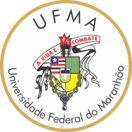| Compartilhamento |


|
Use este identificador para citar ou linkar para este item:
https://tedebc.ufma.br/jspui/handle/tede/5937| Tipo do documento: | Dissertação |
| Título: | OBTENÇÃO E CARACTERIZAÇÃO DE SAIS KRÖHNKITE X2Mn(SO4)2(H2O)2 (X= Na e K) PARA POSSÍVEIS APLICAÇÕES EM SISTEMAS ÓPTICOS E TERMOQUÍMICOS |
| Título(s) alternativo(s): | OBTAINING AND CHARACTERIZATION OF KRÖHNKITE SALTS X2Mn(SO4)2(H2O)2 (X= Na and K) FOR POSSIBLE APPLICATIONS IN OPTICAL AND THERMOCHEMICAL SYSTEMS |
| Autor: | MARQUES, Jacivan Viana  |
| Primeiro orientador: | CARVALHO, Rossano Lang |
| Primeiro membro da banca: | CARVALHO, Rossano Lang |
| Segundo membro da banca: | SLAPNIK, Ana Maria do Espírito Santo |
| Terceiro membro da banca: | SANTOS, Adenilson Oliveira dos |
| Resumo: | Nesta dissertação, cristais do tipo X2Mn(SO4)2(H2O)2 (X= Na e K) com estrutura kröhnkite foram sintetizados e estudados. As propriedades estruturais, térmicas, vibracionais e ópticas são apresentadas e discutidas. As análises de difração de raios X e refinamento de Rietveld mostram que em temperatura ambiente, Na2Mn(SO4)2(H2O)2 cristaliza em um sistema monoclínico com grupo espacial P21/c (No. 14), cristal este pertencente à família kröhnkite tipo-D. Cálculos baseados na teoria da perturbação do funcional da densidade foram realizados para determinar os modos vibracionais inter- e intra-moleculares. Cento e quatorze modos (111 ópticos + 3 acústicos) no intervalo 30-3070 cm-1 são inferidos. Os modos opticamente ativos correspondem a 54 Raman e 57 IR. Os espectros experimentais no IR e Raman com suas respectivas atribuições são apresentados e comparados com o cálculo. Na2Mn(SO4)2(H2O)2 mostrou estabilidade térmica de 300 K até ≈ 410 K, seguida de alterações estruturais associadas a transições e transformações de fase com o aumento da temperatura. Uma entalpia de reação de desidratação de 169,4 kJ/mol foi estimada da curva DSC, onde as moléculas de H2O foram liberadas do cristal em três estágios. O valor de densidade total de energia correspondente de ≈ 1,40 GJ/m3 é bastante promissor para aplicações em dispositivos domésticos de calor termoquímico. No entanto, um ensaio de higroscopicidade após tratamento térmico a 583 K revelou uma reidratação parcial após 24 h em T = 299 K e UR = 58%. As moléculas de H2O não foram reincorporadas na estrutura, e sim adsorvidas na superfície do cristal. Ou seja, não houve uma reversibilidade estrutural, inviabilizando tal aplicação. Padrões de difração de raios X em função da temperatura mostram uma evolução estrutural complexa envolvendo fases anidras de Na-Mn. No intervalo entre 300 e 400 K, a dilatação térmica do cristal Na2MnS2H4O10 apresentou um comportamento marcadamente anisotrópico, típico de fases monoclínicas. O coeficiente de dilatação é superior no eixo cristalográfico [100] em relação aos eixos [010] e [001]. Por outro lado, espectros ópticos de absorbância e transmitância UV-Vis do cristal a 300 K, exibiram sete bandas originadas de transições intraconfiguracionais de íons Mn2+. Um gap óptico de 5,67 eV foi avaliado e atribuído a natureza de banda proibida (bandgap) larga do cristal. Um experimento de prova de conceito para geração de luz branca ideal foi realizado, combinando a luz emitida pelo cristal e um diodo emissor de luz azul. Uma luz branca aproximadamente ideal foi obtida. A força do campo cristalino e os parâmetros de Racah B e C para o cristal também foram estimados. O outro cristal kröhnkite estudado, o K2Mn(SO4)2(H2O)2 tipo-C, também mostrou ser termicamente estável de 300 até ≈ 400 K. Eventos endotérmicos observados nos termogramas TG-DTA e DSC, associados com transição e transformação de fase, foram investigados por difração de raios X e espectroscopia Raman em função da temperatura. O cristal apresentou três fases bem definidas com o aumento de temperatura: fase 1 de simetria triclínica e grupo espacial1P (No. 2) (até 360 K), fase 2 de simetria monoclina com grupo espacial P2 (No. 3) (entre 370-403 K) e, fase 3 de mesma simetria monoclínica, mas com grupo espacial PC (No. 7) (entre 413-653 K). Entre 300 e 360 K, a dilatação térmica do K2MnS2H4O10 triclínico exibiu um comportamento anisotrópico, similar ao cristal Na2MnS2H4O10 monoclínico. Parece ser uma tendência das estruturas kröhnkite independente da simetria. Porém, diferentemente do cristal Na2MnS2H4O10, as moléculas de H2O da estrutura K2MnS2H4O10 são liberadas do cristal em um único passo de desidratação. Uma entalpia de reação de 159,6 kJ/mol, correspondendo a uma densidade total de energia de ≈ 1,16 GJ/m3 foi obtida, sendo o valor um pouco abaixo do valor pré-estabelecido na literatura de 1,3 GJ/m3. O teste de reidratação mostrou que o kröhnkite de potássio desidratado a 413 K não retorna a sua estrutura diidratada em 24 h, um comportamento de adsorção de H2O atmosférico similar ao kröhnkite de sódio. Estes resultados sugerem que mais estudos, principalmente ciclos de desidratação/hidratação em baixa pressão de vapor d’agua e umidade relativa ≈ 100 %, devem ser ainda realizados, antes de assumi-los como promissores para aplicações em dispositivos de armazenamento de energia termoquímica. |
| Abstract: | In this dissertation, X2Mn(SO4)2(H2O)2 (X= Na, K) crystals with kröhnkite structure were synthesized and studied. The structural, thermal, vibrational, and optical properties are investigated and discussed. X-ray diffraction and Rietveld refinement analyses show that at room temperature, Na2Mn(SO4)2(H2O)2 crystallizes in a monoclinic system with space group P21/c (No. 14), a crystal belonging to the kröhnkite family type-D. Calculations based on the density- functional perturbation theory (DFPT) were performed to determine inter- and intra-molecular vibrational modes. One hundred and fourteen modes (111 optical + 3 acoustic) in the 30-3070 cm−1 range are inferred. The optically active modes correspond to 54 Raman and 57 IR. Experimental IR and Raman spectra with their respective assignments are presented and compared with the calculation. Na2Mn(SO4)2(H2O)2 showed thermal stability from 300 K up to about 410 K, followed by structural changes due to transitions and phase transformations with increasing temperature. A dehydration reaction enthalpy of 169.4 kJ/mol was estimated from the DSC curve, where H2O molecules were released from the crystal in three stages. The corresponding total energy density value of ≈ 1.40 GJ/m3 is very promising for domestic thermochemical heat device applications. However, after heat treatment at 583 K, a hygroscopicity assay revealed partial rehydration after 24 h at T = 299 K and RH = 58%. The H2O molecules were not reincorporated into the structure but adsorbed on the crystal surface. In other words, there was no structural reversibility, making such an application unfeasible. X-ray diffraction patterns as a function of temperature show a complex structural evolution involving anhydrous Na-Mn phases. In the range between 300 and 400 K, the thermal expansion of the Na2MnS2H4O10 crystal showed a noticeably anisotropic behavior, typical of monoclinic phases. The expansion coefficient is higher on the [100] crystallographic axis compared to the [010] and [001] axes. On the other hand, UV-Vis optical absorbance and transmittance spectra of the crystal at 300 K exhibited seven bands originating from intraconfigurational transitions of Mn2+ ions. An optical gap of 5.67 eV was valued and attributed to the wide bandgap nature of the crystal. A proof-of-concept experiment for optimal white light generation was carried out using combined light emitted by the crystal and a blue light-emitting diode. Approximately ideal white light is obtained. The crystal-field strength and the B and C Racah parameters for the crystal were also estimated. The other kröhnkite crystal studied, the C-type K2Mn(SO4)2(H2O)2, also proved to be thermally stable from 300 to ≈ 400 K. Endothermic events observed in the TG-DTA and DSC thermograms, associated with phase transition and transformation, were investigated by X-ray diffraction and Raman spectroscopy as a function of temperature. The crystal presented three well-defined phases with increasing 12 temperature: phase 1 of triclinic symmetry and space group1P (No. 2) (up to 360 K), phase 2 of monocline symmetry with space group P2 (No. 3) (between 370- 403 K) and, and, phase 3 of same monoclinic symmetry but with space group PC (No. 7) (between 413-653 K). Between 300 and 360 K, the thermal expansion of triclinic K2MnS2H4O10 exhibited an anisotropic behavior similar to the monoclinic Na2MnS2H4O10 crystal. There appears to be a tendency for kröhnkite structures independent of symmetry. However, unlike the Na2MnS2H4O10 crystal, the H2O molecules of the K2MnS2H4O10 structure are released from the crystal in a single dehydration step. A reaction enthalpy of 159.6 kJ/mol, corresponding to a total energy density of ≈ 1.16 GJ/m3 was obtained, the value being slightly below the value pre-established in the literature of 1.3 GJ/m3. The rehydration test showed that potassium kröhnkite dehydrated at 413 K does not return to its dihydrate structure within 24 h, a similar atmospheric H2O adsorption behavior to sodium kröhnkite. These results suggest that further studies, mainly dehydration/hydration cycles at low water vapor pressure and relative humidity ≈ 100%, should still be carried out before assuming they are promising for applications in thermochemical energy storage devices. |
| Palavras-chave: | Sal duplo sulfatado; Estrutura tipo-kröhnkite; Crescimento de cristais; Caracterização estrutural; térmica; vibracional e óptica; Cálculos DFPT; Transições e transformações de fase; Materiais ópticos; Materiais termoquímicos Double sulfated salt; Kröhnkite-type framework; Crystal growth; Structural; thermal; vibrational and optical characterization; DFPT calculations; Transitions and phase transformations; Optical materials; Thermochemical materials |
| Área(s) do CNPq: | Estrutura de Líquidos e Sólidos; Cristalografia |
| Idioma: | por |
| País: | Brasil |
| Instituição: | Universidade Federal do Maranhão |
| Sigla da instituição: | UFMA |
| Departamento: | DEPARTAMENTO DE FÍSICA/CCET |
| Programa: | PROGRAMA DE PÓS-GRADUAÇÃO EM CIÊNCIA DOS MATERIAIS/CCSST |
| Citação: | MARQUES, Jacivan Viana.Obtenção e caracterização de sais kröhnkite X2MN(SO4)2(H2O)2 (X= NA E K) para possíveis aplicações em sistemas ópticos e termoquímicos. 2023. 92 f. Dissertação( Programa de Pós-graduação em Ciência dos Materiais/CCSST) - Universidade Federal do Maranhão, Imperatriz, 2023. |
| Tipo de acesso: | Acesso Aberto |
| URI: | https://tedebc.ufma.br/jspui/handle/tede/5937 |
| Data de defesa: | 13-Abr-2023 |
| Aparece nas coleções: | DISSERTAÇÃO DE MESTRADO - PROGRAMA DE PÓS-GRADUAÇÃO EM CIÊNCIA DOS MATERIAIS/CCSST |
Arquivos associados a este item:
| Arquivo | Descrição | Tamanho | Formato | |
|---|---|---|---|---|
| JACIVAN VIANA MARQUES.pdf | Dissertação de Mestrado | 3,56 MB | Adobe PDF | Baixar/Abrir Pré-Visualizar |
Os itens no repositório estão protegidos por copyright, com todos os direitos reservados, salvo quando é indicado o contrário.




